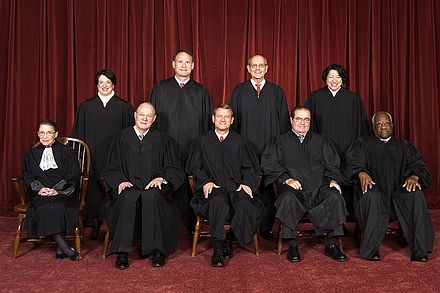A case law system is at the heart of the Anglo-Saxon legal doctrine. Today, as Russian academic theorists state, the Russian Federation belongs to the Romano-Germanic ("continental") family. This involves the application of written laws, and judicial precedent is not of particular importance. However, the decisions of the Supreme Constitutional Court have a guiding force. This, in fact, indicates that case law does exist in Russia. Moreover, in some cases there is a mixture of the two directions. 
Use case as a source of law
Its meaning is different in different historical periods in different countries. The precedent was widely used in the countries of the ancient world and in the Middle Ages. So, for example, in Rome, decisions of praetors and other magistrates were recognized as binding when considering cases. It is worth saying here that in this state, case law has become the basis for many legal areas. Today, a number of states use court decisions as guiding sources. They are called so - "countries of case law". These include Australia, Canada, the UK and others. In the states of the Romano-Germanic ("continental") legal system as the main source in the 18-19 centuries. the law was recognized (normative act). From the 19th century to the present, the value of the precedent has not diminished. Moreover, the role of this source is increasing. 
Concept and signs
A judicial precedent is a decision in a particular case, which becomes binding on all bodies of this or lower instances in the process of resolving similar disputes or serves as an approximate example of interpretation of a norm (law). The main features of this source should include:
- Flexibility.
- Inconsistency.
- Plurality
- Casuism.

Flexibility and inconsistency
It should be noted that even in normative acts adopted by one state body, inconsistency is noted. In this regard, it is not surprising that court decisions on similar disputes can have significant differences from each other. This point determines the flexibility of the precedent as a legal source. In some cases, there is the opportunity to choose from several solutions one that is most suitable for a particular situation. At the same time, in contrast to flexibility, case law has a certain rigidity. It manifests itself in the connectedness of judges once made by decisions of similar cases, the inability to depart from them even to the detriment of expediency and justice.
Casuism and multiplicity
The precedent is characterized by maximum specificity, proximity to the actual situation. This is due to the fact that it is developed in accordance with the decisions of isolated, certain cases, incidents. Precedents can create various instances. This manifests its multiplicity. This, together with the rather lengthy functioning of such bodies, is caused by the fact that case law has such a significant amount. 
Development
Common law reached its heyday in the 12-14 centuries. However, over time, with an increase in the number of court decisions, it began to strive for conservatism and formalization. This, in turn, formed the basis for a qualitatively new stage in the development of the system.Expanding market relations were increasingly not subject to regulation by existing norms. In this regard, a specific order of appeals to the monarch gradually began to take shape with requests to consider the case “in fairness”, “in good conscience”, but not according to precedents.
An appeal of this kind was usually carried out through the Lord Chancellor. He decided the question of transferring the petition to the king. Subsequently, the function of the proceedings was essentially transferred to the Lord Chancellor, and he became an independent judge. In England, thus, two independent directions were formed: "the law of justice" and "precedent." The first gradually changed and eventually began to be realized on the basis of the previously considered incidents. As a result, the Lord Chancellor lost the right, at his discretion and in his own sense of conscience, to resolve disputes in the presence of decisions already made on similar matters. The law of justice has also become a precedent. The differences between them were subsequently insignificant. After the year 1875, the norms of both doctrines began to be applied in the same courts. Thus, in England, case law consists of general rules and decisions taken in fairness.
Modern period
In England, a fundamental reform has been taking place over the course of several decades. The essence of the changes is to intensify lawmaking, unify the course of lawsuit proceedings, unite courts of justice and general jurisdiction. Thus, a significant strengthening of the role of legislative regulation is noted. In particular, the value of the norm has increased in comparison with other legal sources.
Impact on other states
Anglo-Saxon case law has had a significant impact on the development of jurisprudence in India, USA, New Zealand, Canada, Australia. Nevertheless, directly in Great Britain itself the dominance of the general doctrine is far from universal. Case law is used only in Wales and England. In Northern Ireland and Scotland, it is not so widespread. In the countries of the Anglo-Saxon system, there has been legal cooperation since ancient times, and many of the precedents that have been developed by the courts of England have become the property of a number of other states or taken into account when considering disputes.
Along with this, several states, including Australia and Canada, declared their legal autonomy. In the USA, such "sovereignty" began to take shape much earlier - back in the 18th century. Nevertheless, the fact of such a separation of countries included in the Anglo-Saxon legal system does not mean their absolute exit from it. This is due to the fact that the influence of the English doctrine does not confine itself to judicial decisions. The legal system acts as the basis for the development of a general type of legal thinking, features and nature of the activity, the concepts, categories, designs and other elements used. 
Finally
Judicial precedent is considered a sufficiently multifaceted concept. Quite a lot of different opinions are expressed regarding him. It should be noted that acting as a source of law, the precedent has both negative and positive properties. Among the advantages, experts note its flexibility, accuracy and certainty. The latter, according to the researchers, proceeds from the fact that the judge, when considering issues that have already received decisions, must recognize them. Accuracy is achieved through a large number of cases in the reports. They have solutions for many specific situations. Flexibility appears when it is possible to evade a precedent or reject it, if there are differences on the merits. Along with this, an ever-increasing number of solutions is becoming inconvenient. During the consideration of any one case, it is impossible to take into account all the precedents relating to it. This leads to the appearance of conflicting, conflicting decisions.
